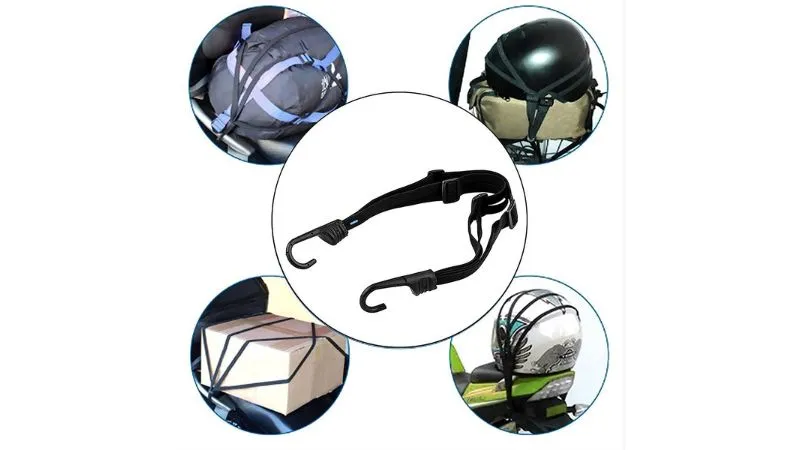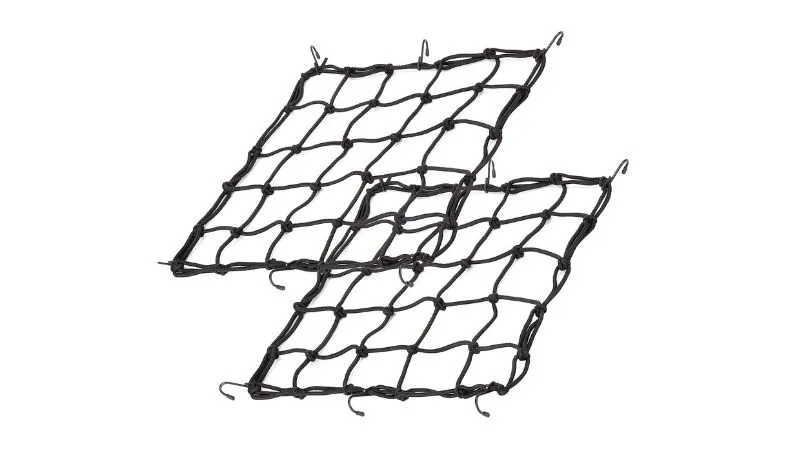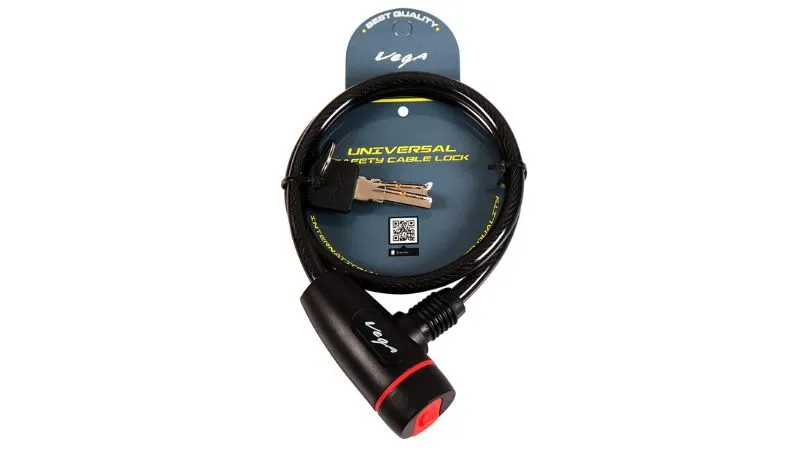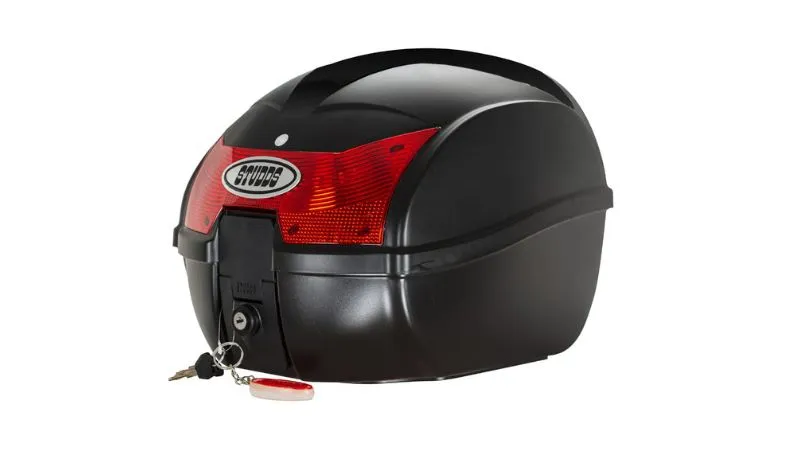How to Safely Carry Your Helmet on a Motorcycle: Tips and Tricks
If you’re tired of carrying your helmet by hand and want an alternative method while riding your motorcycle, don’t worry.
I have some solutions that can help you eliminate this inconvenient technique and carry your helmet easily.
How to Carry Your Helmet on a Motorcycle
To ensure your safety and the longevity of your helmet, it is important to follow proper helmet-carrying techniques.
Here are a few techniques I often use while carrying my spare helmet.
1. Using a Backpack

Carrying a helmet on a motorcycle can be challenging, but using a backpack is one of the most convenient ways to transport your helmet.
But not all backpacks are created equal.
Some backpacks are designed specifically for motorcycle riders, while others are not.
When choosing a backpack for helmet transport, there are a few things to consider:
- Size: Make sure the backpack is large enough to fit your helmet comfortably.
- Comfort: Look for a backpack with padded straps and a comfortable back panel.
- Durability: Choose a backpack made from high-quality materials that can withstand the rigors of motorcycle riding.
- Water resistance: Look for a water-resistant backpack to protect your helmet from getting wet.
- Style: There are many different styles of motorcycle backpacks available, including sporty, casual, and tactical.
Overall, using a backpack is a great way to transport your helmet on a motorcycle.
Just make sure to choose a backpack that is designed for motorcycle riding and has the features you need to keep your gear safe and secure.
2. Using a Carrier Strap

If you’re looking for a simple and effective way to carry your passenger helmet on a motorcycle, a carrier strap might be the perfect solution for you.
It’s a strap that attaches to your motorcycle and allows you to securely carry your helmet when you’re not wearing it.
When choosing a carrier strap, there are a few things to consider. Here are some tips to help you choose the right one for your needs:
- Compatibility: Make sure that the carrier strap you choose is compatible with your motorcycle. Some carrier straps are designed to fit specific models of motorcycles, so make sure you choose one that will work with your bike.
- Durability: Look for a carrier strap that is made from durable materials. You want a carrier strap that will last for a long time and won’t break or wear out easily.
- Security: Make sure that the carrier strap you choose is secure and won’t come loose while you’re riding. Look for a carrier strap that has a hook or loop that you can use to attach your helmet securely.
- Ease of use: Choose a carrier strap that is easy to use and won’t require a lot of time or effort to attach or remove. You want a carrier strap that you can use quickly and easily when you need it.
By following these tips, you can choose a carrier strap that will work well for your needs and help you carry your passenger helmet safely and securely on your motorcycle.
But do you know the correct way to use a carrier strap?
Here are some basic steps to follow when using a carrier strap:
- Attach the carrier strap to your motorcycle. Most carrier straps attach to the passenger foot pegs or the rear seat of your motorcycle. Follow the manufacturer’s instructions to ensure that the carrier strap is securely attached.
- Place your helmet on the carrier strap. Most carrier straps have a hook or loop that you can use to attach your helmet. Make sure that your helmet is securely attached to the carrier strap before you start riding.
- Adjust the carrier strap as needed. You may need to adjust the carrier strap to ensure that your helmet is secure and won’t move around while you’re riding.
3. Using a Saddlebag
If you’re looking for a way to carry an extra helmet on your motorcycle, using a saddlebag is a great option.
Saddlebags are a popular choice among motorcyclists because they offer a lot of storage space and are relatively easy to install.
When it comes to selecting a saddlebag for your helmet, there are a few key factors to consider.
These considerations will ensure that you find the perfect saddlebag that meets your needs and provides a secure and convenient way to transport your helmet.
- Size Matters: Make sure it is large enough to hold the helmet comfortably. You don’t want to force the helmet into the bag, as this can damage the padding or shell.
- Attachment Method: Choose a saddlebag with an attachment method compatible with your motorcycle. Some options include straps or buckles, while others require a mounting bracket. Prioritize ease of use.
- Material Considerations: Consider the material of the saddlebag for durability and aesthetics. Leather is durable and stylish but can be pricey. Nylon and other synthetic materials offer durability, affordability, and a variety of designs to choose from.
Overall, using a saddlebag to transport your helmet is an excellent choice, providing a secure and efficient solution.
Remember to select a saddlebag that fits your motorcycle, offers sufficient space for your helmet, and is securely attached to the bike to ensure a worry-free riding experience.
4. Using a Cargo Net

When it comes to transporting helmets, cargo nets are a great option because they can securely hold the helmet in place while you ride.
They are made of elastic material and have hooks on each end that can be attached to various parts of your bike, such as the passenger seat or luggage rack.
When deciding to use a cargo net to transport your motorcycle helmet, it is crucial to consider a few important factors.
These considerations will help you select the right cargo net that ensures the safe and secure transportation of your helmet on your motorcycle.
- Optimal Fit: Ensure that the cargo net is the right size for your helmet. A smaller net with a tighter weave provides better security and prevents the helmet from shifting or slipping during the ride.
- Durability is Key: Select a cargo net made of high-quality materials that can withstand the rigors of motorcycle travel. Look for a net constructed from durable and elastic materials that won’t stretch out or break easily, ensuring long-lasting performance.
- Secure Attachment: Choose a cargo net equipped with sturdy hooks that can be securely attached to your motorcycle. This ensures that the net remains firmly in place, keeping your helmet secure throughout the journey.
5. Using a Helmet Lock

Carrying a spare helmet on your motorcycle is easy with a helmet lock.
The primary purpose of using a helmet lock is to prevent theft or damage to your helmet.
But, helmet locks are useful for situations where you might need to transport an extra helmet.
Now, it can be a hassle to choose the right helmet lock that you’ll be using to carry your helmet.
So, here are a few things to keep in mind.
- Type of Lock: Consider the different types of helmet locks available, such as cable locks, carabiner locks, or combination locks. Choose one that suits your preferences and offers the desired level of security.
- Security Level: Evaluate the lock’s security features, such as the strength of the materials used and its resistance to tampering or picking.
- Mounting Options: Check if the lock can be easily mounted on your motorcycle. Look for options like frame mounting, handlebar mounting, or passenger footpeg bracket compatibility.
- Ease of Use: Consider how user-friendly the lock is. Look for features like keyless operation, quick-release mechanisms, or simple locking mechanisms that offer convenience.
- Compatibility: Make sure the lock is compatible with your helmet. It should accommodate various helmet designs, including full-face, open-face, or modular helmets.
6. Using a Tail Bag

A tail bag is a great option if you want to carry an extra helmet on a motorcycle.
It attaches to the rear of the bike and provides ample space for your helmet and other items.
Tail bags come in various sizes and designs, so you can choose one that suits your needs and preferences.
For that, here are my tips.
- Size and Capacity: Ensure that the tail bag is spacious enough to accommodate your helmet comfortably. Consider the bag’s dimensions and capacity to ensure a proper fit.
- Mounting System: Check if the tail bag offers a secure and stable mounting system that suits your motorcycle. Look for options like straps, bungee cords, or a quick-release mechanism that can be easily attached to your bike’s tail section.
- Durability and Weather Resistance: Assess the bag’s material and construction to ensure it is durable and able to withstand different weather conditions.
- Security Features: Consider if the tail bag has built-in security features, such as locking zippers or the ability to attach a separate lock, to keep your helmet safe from theft.
7. Using a Pannier
Panniers are another option for carrying an extra helmet on a motorcycle.
They attach to the sides of the bike and provide a lot of storage space.
To choose a perfect pannier for your motorcycle, consider these tips.
- Size and Capacity: Ensure that the pannier is large enough to comfortably accommodate your helmet.
- Helmet Compartment: Look for a pannier that specifically includes a designated helmet compartment or a secure attachment system to safely store your helmet.
- Mounting System: Check if the pannier offers a secure and stable mounting system that suits your motorcycle. Look for options like quick-release mounting brackets or racks that are compatible with your bike’s design.
- Durability: Assess the pannier’s material and construction quality to ensure it is sturdy and durable.
- Waterproof: Consider if the pannier is waterproof, as this will help keep your helmet dry during rainy weather.
- Security Features: Look for panniers with built-in security features, such as lockable latches or the ability to add separate padlocks, to keep your helmet secure.
- Accessibility: Check if the pannier provides easy access to your helmet. Consider features like wide openings, hinged lids, or side zippers that allow for convenient loading and unloading.
8. Using a Top Box

A top box is a great option if you want to carry an extra helmet on a motorcycle.
It attaches to the rear of the bike and provides a lot of storage space.
To choose the right top box for your motorcycle, here are my tips.
- Size and Capacity: Ensure the top box is large enough to comfortably fit your helmet.
- Mounting System: Check if the top box comes with a compatible mounting system for your motorcycle.
- Locking Mechanism: Look for a top box with a reliable locking mechanism to keep your helmet safe.
- Waterproof: Opt for a top box that is waterproof or weatherproof to protect your helmet from rain and other elements.
- Material and Durability: Choose a top box made of durable materials like reinforced plastic or aluminum.
- Aerodynamics: Look for a top box that is aerodynamically designed to minimize wind resistance and maintain stability while riding.
- Ease of Use: Consider features like quick-release systems or single-handed opening mechanisms for convenient access to your helmet.
- Compatibility with Motorcycle Style: Select a top box that complements the style and aesthetics of your motorcycle.
Why Should You Carry Your Helmet Safely?
Carrying your helmet safely is important for three reasons.
First, it is important to keep in mind that it is a valuable piece of safety equipment.
Dropping it or mishandling it can cause damage that may not be immediately visible.
This damage can weaken the helmet’s structure and make it less effective at protecting your head in the event of an accident.
Second, carrying your helmet improperly can create a hazard while you are riding.
If your helmet falls off or becomes loose, it can distract you or even cause an accident.
And third, I’m sure you understand how uncomfortable it can be to carry a helmet by hand.
I know this from personal experience because I used to carry my spare helmet that way, and after the ride, my hand would become very painful.
How to Prevent Your Helmet from Getting Damaged While Carrying it?
Taking proper care of your helmet is essential to ensure its longevity and effectiveness in protecting your head.
When carrying your helmet, it’s important to employ certain precautions to prevent any damage. Consider the following tips:
1. Choose the Right Method
Whenever you plan to carry your helmet, take some time to consider the appropriate method.
While one method may work for me, it may not be suitable for you.
Therefore, before carrying your helmet, identify the method that works best for you.
2. Always Use a Helmet Cover
When carrying your helmet, it is important to always use a helmet cover.
This is because while riding, the bike can encounter potholes and speed breakers that may potentially damage your helmet.
By covering your helmet, you reduce the risk of it being damaged.
Therefore, if you want to protect your helmet from any potential damage while carrying it, simply place it inside a helmet cover.
3. Avoid Placing Heavy Objects on Top
If you are carrying your helmet using a backpack or top box, it is important not to place heavy objects on top of it.
This is because, during speed breakers, these objects can potentially cause significant damage to your helmet.
However, if you need to carry additional items along with your helmet, a good practice is to place those items underneath the helmet and then position your helmet on top.
This arrangement helps ensure that the weight of the other items is distributed evenly and reduces the risk of any damage to your helmet during the ride.
4. Secure the Helmet Properly
When placing your helmet in a bag or attaching it to your motorcycle, it is crucial to ensure it is properly secured.
Take the time to check that any straps, locks, or fasteners are securely tightened.
This helps prevent the helmet from shifting or falling during transportation.
Before riding, it is advisable to double-check the security of the attachment method.
Confirm that everything is tightly fastened to give you peace of mind and ensure the helmet remains in place throughout your journey.
Taking these precautions helps maintain the safety and integrity of your helmet during transportation.
5. Inspect Regularly
While carrying your helmet on a motorcycle, it is important to regularly inspect it.
Failure to secure your helmet properly can result in it slipping off the motorcycle and getting damaged.
Therefore, it is recommended to check your helmet periodically while riding.
By following these tips and regularly checking your helmet, you can help prevent unnecessary damage and ensure that it remains in optimal condition for your safety on the road.
The Bottom Line
Carrying a helmet on a motorcycle is an essential part of safe riding.
Although there are many ways to do it, it’s important to choose the one that works best for you.
As a motorcycle rider, you want to ensure that your helmet is secure and protected from damage during transport.
The final word on how to carry a helmet on a motorcycle is that it depends on your personal preference and the type of motorcycle you ride.
If you have a luggage rack, using a saddlebag or cargo net is a good option.
And if you prefer to carry your helmet on your person, then a backpack or helmet lock is a great choice.
Remember to always check that your helmet is securely fastened before riding.
A loose helmet can be dangerous and cause injury in the event of an accident.
Additionally, make sure to inspect your helmet regularly for any signs of damage or wear and tear.
Lastly, check out my these guides as well.
Frequently Asked Questions
How should I carry my helmet when I’m not wearing it?
There are various methods for carrying a helmet on a motorcycle, and some common practices include using a helmet lock, backpack, cargo net, or top box.
Can I attach my helmet to the motorcycle with a bungee cord or strap?
While it is technically possible to use a bungee cord or strap to secure your helmet to the motorcycle, it is not recommended. The helmet might become loose or fall off due to vibrations or road conditions, posing a safety hazard to other riders and pedestrians.
Is it safe to hang my helmet from the handlebars?
No, it is not advisable to hang your helmet from the handlebars. It can obstruct your view, interfere with the controls, and compromise your ability to steer and brake properly. It’s best to explore alternative methods for carrying your helmet securely.
How can I prevent my helmet from getting damaged while carrying it?
To keep your helmet safe while carrying it, it is important to choose the right method, always use a helmet cover, avoid placing heavy objects on top of it, and inspect it regularly.

